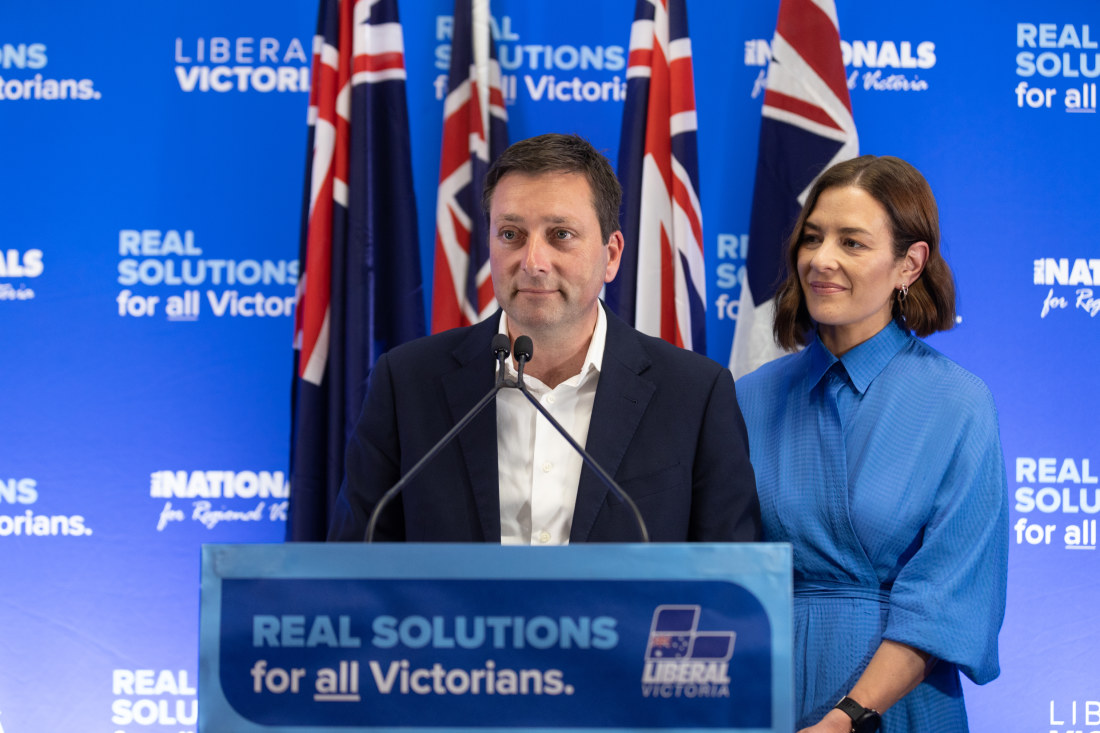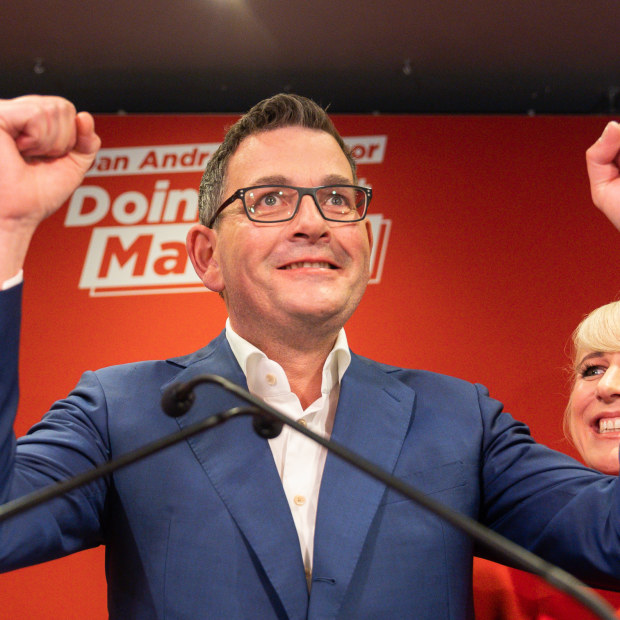How the Liberal Party can return from disaster
Liberal #Liberal

But they now concede it wasn’t enough; they failed to provide a credible alternative, in human and policy leadership.
The solution was part of the problem. Liberals felt parliamentary leader Matthew Guy gave the campaign all he had, but it wasn’t enough to overcome Victorians’ dislike or suspicion of a politician who, as summed up in one of the great headlines of Australian journalism, had “lobster with a mobster”.
Matthew Guy (with wife Renae) concedes defeat on Saturday night. Jason South
Guy is well known to Victorians – too well known. In the 2018 election he campaigned from the right, and lost the affluent eastern suburbs. This time he tracked left, promising more resources for hospitals and public transport.
An offer of $2 train, tram and bus fares was a point of pride. But for the prospect to be credible, it needed to be part of a component of a cohesive, principled plan that explained how a Liberal government would improve Victorians’ lives, senior Liberals said.
Apart from being anti-Andrews, the campaign lacked focus. Many voters couldn’t see how life would change under a Liberal government.
“In May, June, July, and August we talked about health infrastructure,” said Tim Smith, a former frontbencher turned fierce critic. “The only game in town was cost of living, We didn’t talk about it until September.”
The internal distractions never seemed to end either. The party has been fighting over failure since Andrews was first elected in 2014. Two decades of election losses broke down internal discipline and fuelled vicious factional conflict, which sapped resources and destroyed any sense of party professionalism.
Only two weeks before election day, the opposition leader and his ex-chief of staff were referred to the anti-corruption agency by the electoral commission. Many party officials are convinced the leak that triggered the investigation was an inside job.
Daniel Andrews celebrates during his victory speech on Saturday night. Getty
Paradoxically, failure has distracted the Liberals – when it should have focused them – from their structural problem in Victoria: in a proudly progressive state, the party is perceived to be closer, ideologically, to Scott Morrison and Tony Abbott than Jeff Kennett or the late Andrew Peacock.
That’s why Wolahan, who didn’t enter politics from the faction wars, is trying to convince his party to think about why millions of Australians don’t want to vote Liberal.
Like them, he’s concerned about the affront to fairness when families can’t afford good homes near work. On a political level, he’s worried about industry superannuation funds – which seem determined to crush the Liberal Party – emerging as big providers of rental or subsidised housing.
Wolahan’s observations are uncomfortable for his party, an organisation of landowners. The consequences could be more crowded suburbs, fewer tax breaks and lower property prices.
“Are we the party of inner-city anaesthetists who vote teal and own ten rentals?” he said on Sunday. “Or are we the party of young families looking to own their first piece of Australia? Every lever must be on the table.”
After the defeat of the Morrison government in May, party federal director Andrew Hirst tried to explain to the surviving Liberals what had gone wrong. Among some of those listening, one fact stood out.
Asked if the Liberal Party “had fallen behind the views of modern Australia”, 67 per cent of voters agreed.
Australia is changing. To return to power, the Liberal Party needs to change too.

